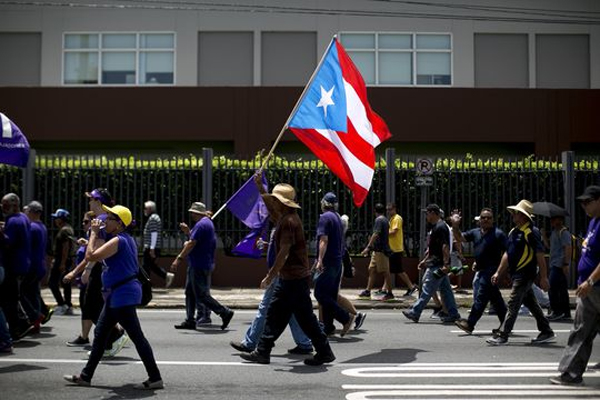
Photo: Xavier Garcia/Bloomberg
By Natalie Jaresko and David Skeel
Puerto Rico has completed the biggest public-debt restructuring in American history, whittling $33 billion of obligations down to $7 billion over the past five years and rescuing its pension system. To put this in perspective, Puerto Rico resolved three times as much debt as Detroit did in its bankruptcy and more than 10 times Detroit’s unfunded pension liability. “It is the court’s hope and expectation,” Judge Laura Taylor Swain said after approving the restructuring, “that the confirmation of the plan marks the beginning of Puerto Rico’s brightest chapter.”
The most innovative features of the plan of adjustment seek to ensure that repayment never becomes unaffordable. The recoveries of many creditors are based in part on a contingent-value instrument linked to sales-tax revenue. Only if the revenue is higher than projected—and thus, Puerto Rico’s economy is doing well—will creditors receive a higher recovery.
To ensure that Puerto Rico never fails to make its pension payments, the plan of adjustment shifts future pensions from defined-benefit promises, which lawmakers repeatedly failed to fund, to defined contributions to individual retirement accounts. For the $50 billion of accrued but unfunded obligations, the plan creates a unique pension trust that will be funded over the next 10 years with at least $175 million a year.
Despite these benefits, some have harshly criticized the plan. One prominent local critic claimed that “we are risking the future and the quality of life of an entire country in this debt-adjustment plan, and the mistakes we make today will not be easily remedied tomorrow.”
Why this hostility to such a successful restructuring? One reason is that critics view the Oversight Board, which was created by Congress and led the restructuring, as a colonialist intrusion on Puerto Rico. These concerns are accurate in one respect. The Territories Clause in Article IV of the U.S. Constitution gives Congress sweeping authority over Puerto Rico. Congress could not have imposed an oversight board on a state.
But Puerto Rico’s financial crisis was so severe by 2016 that both then-Gov. Alejandro Garcia Padílla and Puerto Rico’s congressional representative Pedro Pierluisi (who is now governor) supported and helped to shape the Puerto Rico Oversight, Management and Economic Stability Act, the legislation that created the board. In part due to their efforts, Promesa gave Puerto Rico a benefit no state has: the right to restructure its debts under a bankruptcy-like framework.
Other critics believe Puerto Rico should have wiped out the debt altogether. But creditors’ legal entitlements under American law make it impossible simply to erase valid obligations. To be sure, some of the debt was legally problematic. But the restructuring accounts for this: Roughly $6 billion of bonds that arguably were issued in violation of Puerto Rico’s constitutional debt limit will receive less than those that were not, and $3 billion of dubious pension bonds settled for a small portion of what they claimed to be owed. Trying to void these obligations altogether would have taken years of additional litigation costing millions of dollars and might have failed, forcing Puerto Rico to pay the obligations in full.
WSJ 01 25 2022
The critics should consider the restructuring from a different perspective. Puerto Rico’s status has been debated since the island became part of the U.S. in 1898. Some Puerto Ricans favor statehood, some prefer commonwealth status, and some call for independence, but everyone agrees that there is an urgent need to address the territory’s finances. Congress is unlikely to step in to make a determination on status until Puerto Rico gets its financial house back in order. Puerto Rico’s crushing debt load has been one of the biggest obstacles to achieving this.
That obstacle now has been removed.
Ms. Jaresko is executive director and Mr. Skeel is chairman of the Puerto Rico oversight board.











